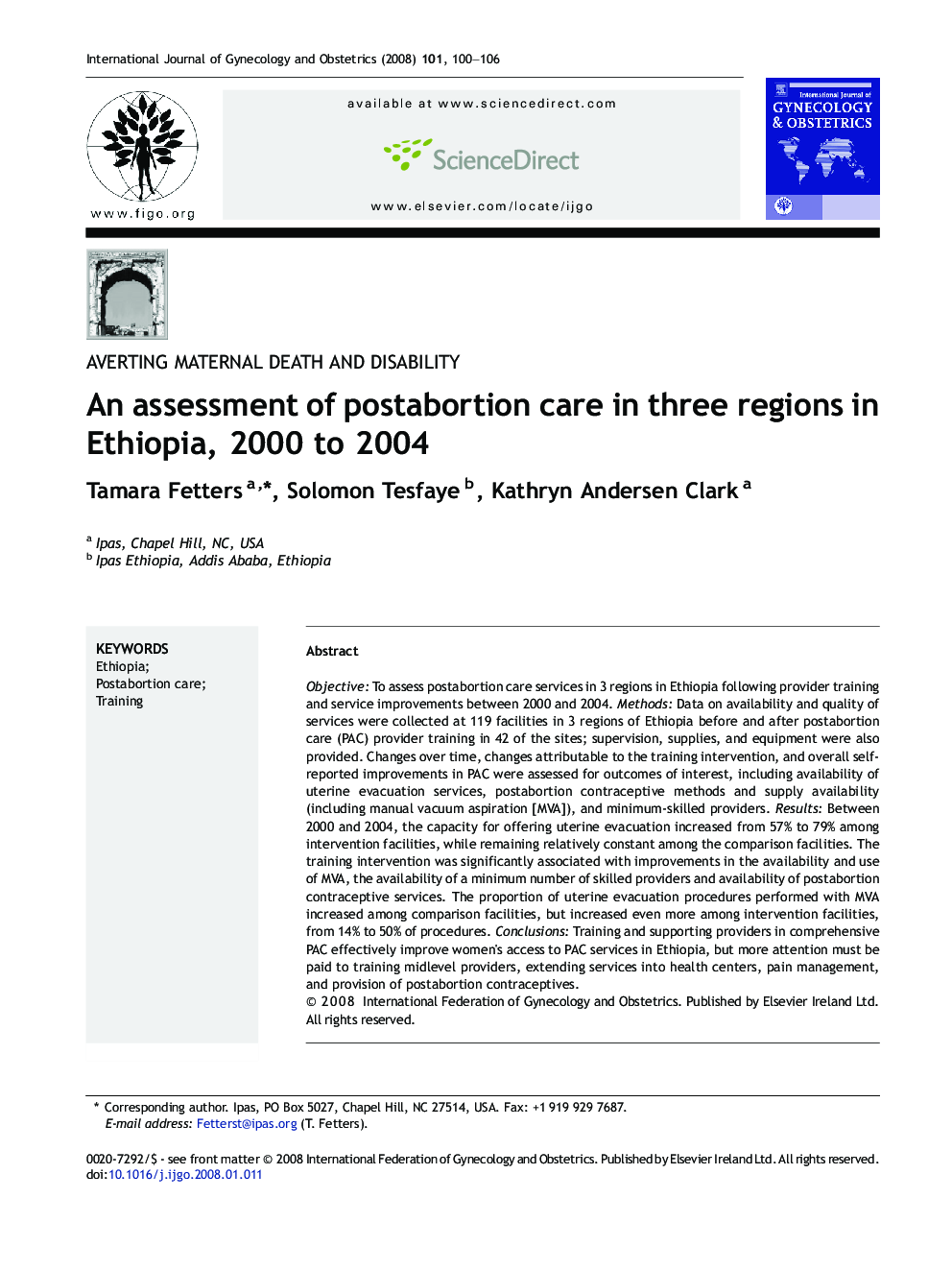| Article ID | Journal | Published Year | Pages | File Type |
|---|---|---|---|---|
| 3950352 | International Journal of Gynecology & Obstetrics | 2008 | 7 Pages |
ObjectiveTo assess postabortion care services in 3 regions in Ethiopia following provider training and service improvements between 2000 and 2004.MethodsData on availability and quality of services were collected at 119 facilities in 3 regions of Ethiopia before and after postabortion care (PAC) provider training in 42 of the sites; supervision, supplies, and equipment were also provided. Changes over time, changes attributable to the training intervention, and overall self-reported improvements in PAC were assessed for outcomes of interest, including availability of uterine evacuation services, postabortion contraceptive methods and supply availability (including manual vacuum aspiration [MVA]), and minimum-skilled providers.ResultsBetween 2000 and 2004, the capacity for offering uterine evacuation increased from 57% to 79% among intervention facilities, while remaining relatively constant among the comparison facilities. The training intervention was significantly associated with improvements in the availability and use of MVA, the availability of a minimum number of skilled providers and availability of postabortion contraceptive services. The proportion of uterine evacuation procedures performed with MVA increased among comparison facilities, but increased even more among intervention facilities, from 14% to 50% of procedures.ConclusionsTraining and supporting providers in comprehensive PAC effectively improve women's access to PAC services in Ethiopia, but more attention must be paid to training midlevel providers, extending services into health centers, pain management, and provision of postabortion contraceptives.
